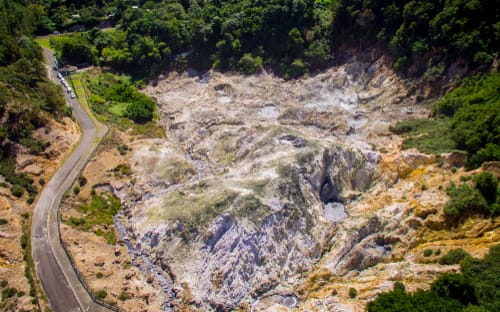Saint Lucia
The island, with its fine natural harbors in Castries and Vieux Fort, was contested between England and France throughout the 17thand early 18thcenturies, changing possession 14 times; it was finally ceded to the United Kingdom in 1814. Self-government was granted in 1967 and independence in 1979. Saint Lucia, still an un-spoilt island in the Caribbean is a sparkle jewel of sunshine and sandy beaches nestled between Martinique and St. Vincent & The Grenadines with Barbados some 90 miles off its southeast. Saint Lucia lies approximately 1,300 miles southeast of Florida or more accurately, between 60 degrees west longitude and 13 degrees and 14 degrees north latitude,
Saint Lucia is tropical, moderated by northeast trade winds with a dry season from January to April and moderate rainy season from May to November. The island is volcanic and mountainous with some broad fertile valleys. The twin Pitons, now a UNESCO “World Heritage Site” Gros Piton and Petit Piton are striking cone- shaped peaks rising over 3,000 feet above sea level. Located south of Soufriere, the Pitons are one of the most visited natural attractions in the Caribbean.















